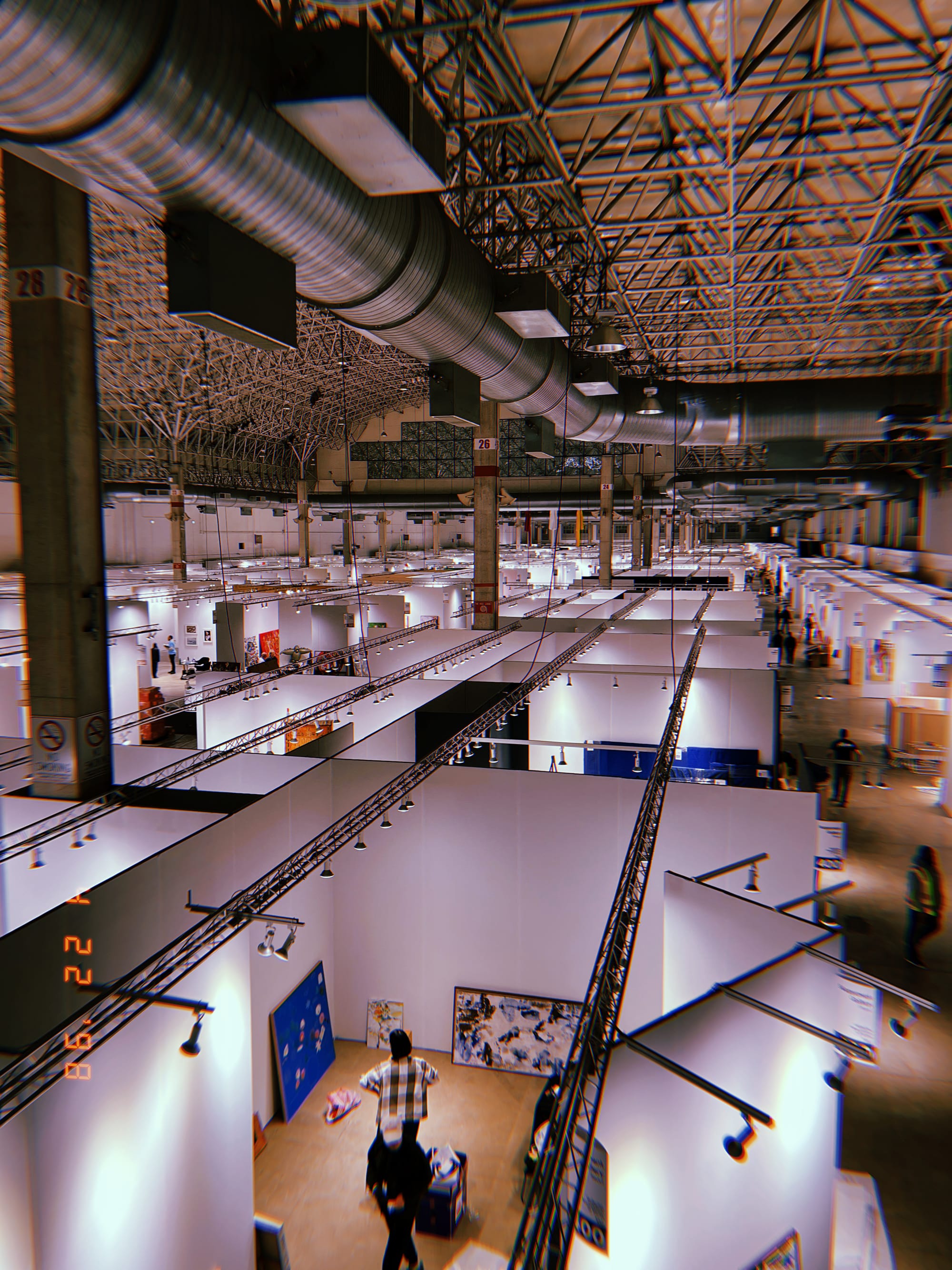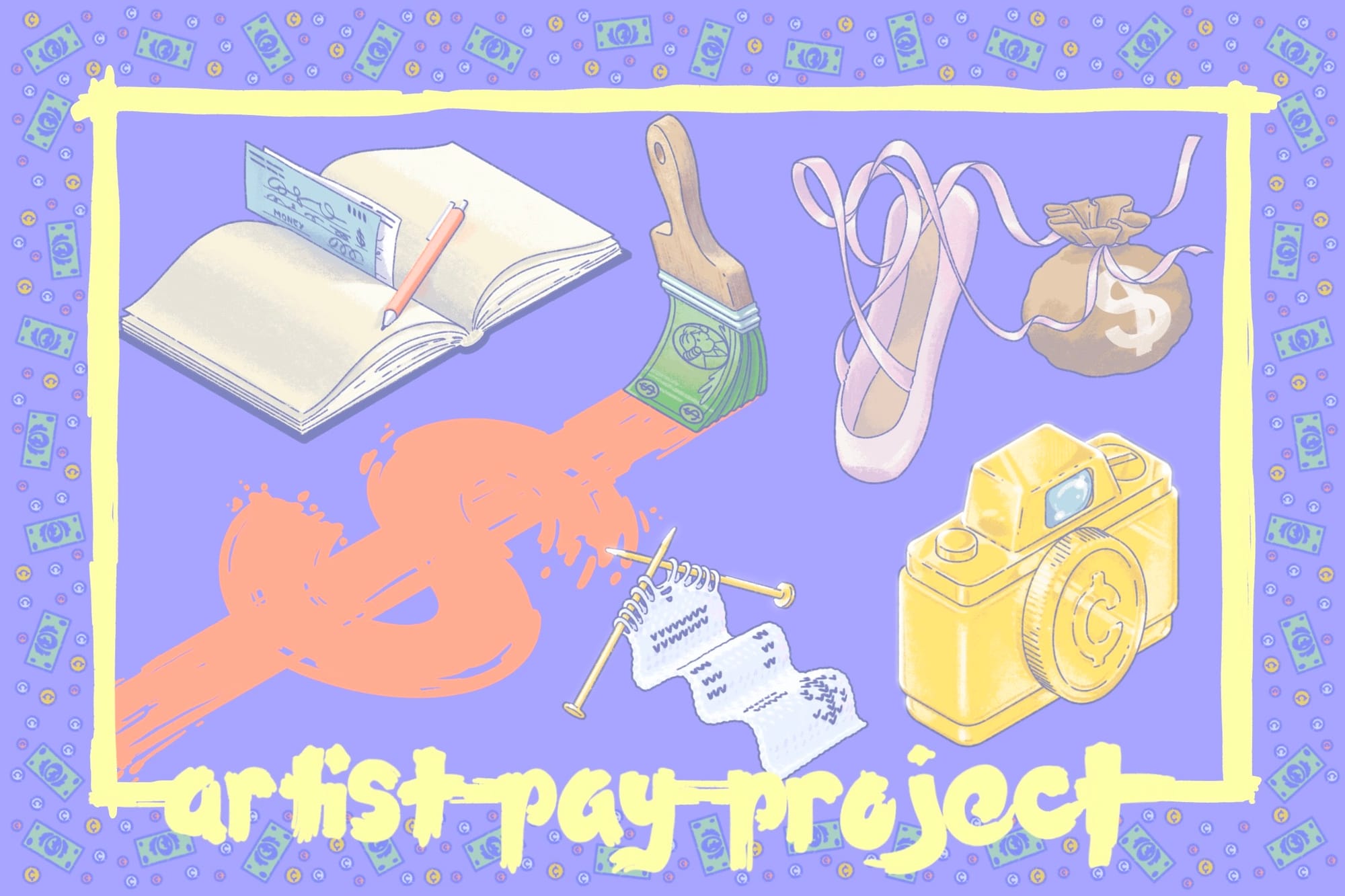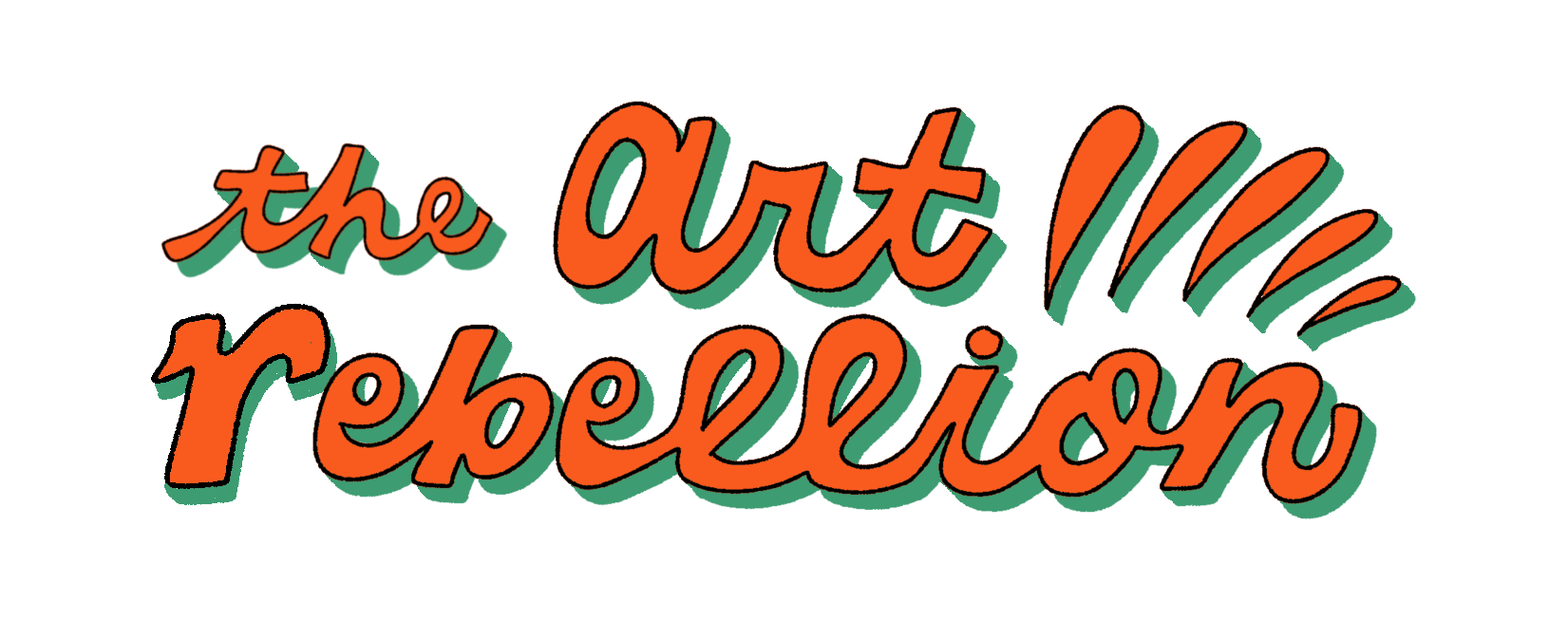Reflections from Expo Chicago
Working a hospitality gig at an art fair paid me much more than writing an article about it.
Two weeks ago, I worked Expo, the annual contemporary art fair on the Navy Pier in Chicago. For years, “working” a fair or big arts event meant covering it for a publication or my own project.
This time, I worked a gig with a hospitality staffing company. For three days, I was on the publications team, greeting visitors, collectors, artists, and gallerists coming in and out of the fair and handing out branded magazines. I saw the gig listing in March and thought it might be an interesting way to make money at something I was planning to attend anyway.
Some time during my first 8-hour shift, on the VIP opening day, I had the strange realization that I was going to make a lot more money doing this type of work instead of freelance writing. The hospitality gig paid $23 an hour. I worked 3 full day shifts. With training, I expect to be paid close to $600.
I covered an art fair for a publication last year and was paid $500 (a rate I negotiated for). When I estimate how much time I spent working on the story — research, traveling to the fair, interviews, writing, follow-up interviews, going through edits — I made around $10 an hour. If I had actually tracked my hours, it probably was a bit less, to be honest.
The hospitality gig was physically exhausting. I was on my feet for the vast majority of my shifts and being a friendly, welcoming presence to thousands of people at the fair left me drained at the end of each day. However, I loved that when I finished my shift, the work was done.

I didn’t have to stress about ledes or hype myself up to start writing after a long day of reporting. While working as a greeter, I had really great conversations with artists and others involved in the arts.
We were told payment would be directly deposited into our bank accounts a couple weeks after the fair. And while I haven’t gotten the payment yet, I have the distinct feeling I won’t need to send email, after follow up email, after follow up email, just to get paid.
Doing this work around pay transparency and pay inequity in the arts over the past two years has made me hyperaware that the struggles many artists are facing are the same struggles that journalists are facing, and are the same struggles that other marginalized workers around the US face everyday. We are all deeply connected in this fight to live full lives where we have all the resources we need to thrive.
Artist Pay Project
In recent months, I’ve started publishing more Artist $napshots. This is an excerpt from an interview with a collage and sculpture artist in Chicago who racked up $100,000 in debt pursuing an MFA and a BA.

Survey
Art Practice: Collage artist, designer, sculpture, installation artist
Location: Chicago, IL
Age: 30
Pronouns: He/Him
Earnings
Income:
Monthly income varies widely, but averages out to between $2,500 and $3,000 a month before taxes
How much of your income is from your art practice?
In 2024, it’s about 30% of my income.
Where does the rest come from?
The rest of my income comes from a variety of freelance work that I do. Primarily, I do a lot of freelance photography, website design, video editing, etc. This past year I’ve made about $25,000 from this additional work.
How much did you make from recent art-related gig work?
This also varies so widely. For instance, I just got a gig taking some photos for a small gallery for $125, but I also just did a huge shoot for a museum last month that paid $3,300. Another one of my recent clients was a dance academy in the suburbs that hired me to photograph one of their classes for promotional use and I was paid $260 for that.
How do you price your work?
I’ve sold work for anywhere between $200 and $1,500 per piece. Generally, I price things at the higher range of that the first time it’s shown (not including the gallery’s cut, so the list price is often up to $2,000) and if things don’t sell at that price I’ll sell them at a discount and things often sell really quickly between $400 to $600 directly to collectors.
Expenses
Housing:
My wife and I split rent evenly at $1,445, so we each pay $722.50 per month.
What are your major monthly expenses?
- Credit card bills: I have a bunch of credit card debt, I pay about $350 a month towards that
- Car payment split with my wife: $125 per person, per month
- Cell phone bill: $100-ish because I’m paying off a new phone
- Health insurance through my wife’s work: $300 a month
Do you have any monthly expenses related to your art practice?
I pay $280 per month for studio rent. Material costs vary widely depending on the month and what I’m working on, but for example a recent piece sold for $500 and I probably spent $150 making it.
Larger financial picture
Do you have any financial support from outside sources?
My wife makes more money than me and has a steady job with consistent income so she often picks up slack on bills when there is some. Other than that, I don’t get much outside support apart from the occasional $100 bill from my grandma on my birthday.
Have you received any grants to support your art?
Yes, I received a $6,000 DCASE grant from the City of Chicago this past year.
Do you have health insurance?
Yes
Do you have any debt?
Yes, a mountain of student loan debt (roughly $100,000 from undergrad and grad school combined) that I’m not paying off and a smaller hill of credit card debt that I actually am paying off.
Do you have any savings?
Not a nickel!
Did you pursue higher education?
Yes I got my MFA and BA
With the ~$100,000 of debt that you have, is it something that's “out of sight, out of mind” for now, or does it ever worry you at all?
It is “out of sight out of mind,” because I'm on the income-based repayment plan. I'm not currently required to pay anything right now because the amount of money I made last year didn't reach the minimum that was required to continue making payments. I'm on top of it, as far as I'm not just letting it go into default or anything. But I'm actively avoiding paying it for as long as I can.
I really don't know what is going to happen. Obviously, I'm going to have to start paying it at some point. The debt is something I think about from time to time, but honestly at this point, because the payments were not required for so long during covid, it's gone out of my mind so much that I don't really know what I would do if I absolutely had to start making significant payments. It's something that's looming in the background. And I’m avoiding it until I can’t.
Read the full interview here.
RIP to federal arts funding???
Last Friday, the NEA began issuing notices of grant terminations to a number of arts organizations across the country, rescinding all or part of their funding. This NEA grant termination tracker by theater director Annie Dorsen now includes close to 400 organizations that have been impacted. Most terminated grants appear to be in the $15,000 to $50,000 range. But some organizations, like Minnesota's Springboard for the Arts, have lost much larger amounts.
I’m noticing a disturbing trend in my inbox — art organizations shuttering entirely or pausing long-standing programs in this new Trump era.
In mid-April, one organization that has supported the development and presentation of new and experimental works in Chicago for nearly 50 years, sent out an email with the subject line, simply titled: “An Update from Links Hall.” In the email, leadership announced the organization was closing this June. Here is their note about why:
This decision was made after several years of struggling to balance the cash needs to operate Links Hall and the funding reality after years of diminished foundation and government support. At the end of last year, with the unexpected loss of another general operating grant, we launched a 5-month public effort to fundraise to stabilize the organization and address a cash flow emergency.
Our community showed up and supported us, helping us raise half of our goal. This was tremendous but also reinforced the funding ceiling we continuously hit. Across the early years of the COVID pandemic, two leadership and staff changes, we worked to stabilize. Amidst a rapidly shrinking arts funding climate and today’s economic reality, the financial challenges that lay ahead are simply too great to survive. Our options are few, our capacity is diminished, and with another looming cash flow gap on the horizon, this time months-wide, we feel the most responsible decision to make is to sunset.
I got an email from Tapestry Dance in Austin, Texas last weekend announcing the last minute cancellation of its annual tap dance festival, Soul 2 Sole, now in its 25th year. This comes after losing a $30,000 NEA grant.
It’s getting spooky out here. Have any of your favorite arts organizations cancelled programming or closed entirely? Please let me know!
Personal news
I’m working on a book! Over two years ago, an editor from Hachette’s Artisan Books reached out to me after reading an essay I wrote for the LA Times about learning to roller skate during the early pandemic days.
Last year I officially signed a contract to develop a coffee table style book about the culture of roller skating in the US. I’ve been chipping away at interviews and photo research, working toward a draft which is due in November.
While this isn’t an art rebellion project per se, it is definitely art rebellion-inspired. I’m deeply interested in the influence of Black culture on skating, the intersection between skating and activism, and how marginalized groups have found and built communities through roller skating.
As my deadline gets closer (please send me all the good writing vibes ✨), I’m focusing more of my attention on the book. All that to say, there may be some gaps in between newsletters and updates but I am still here.
I hope everyone is doing okay in these troubling times and carving out space for joy when possible. Thanks so much for supporting and following my journey.
See y’all next time. 🦄
